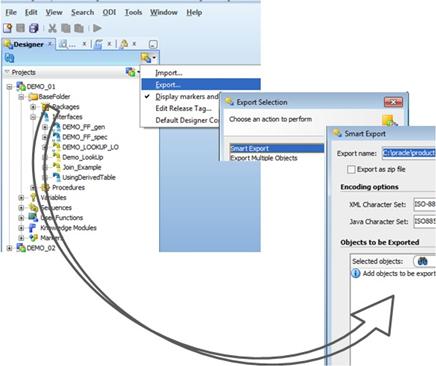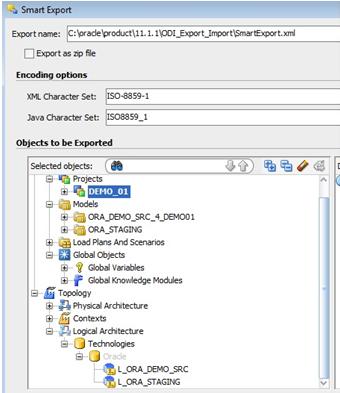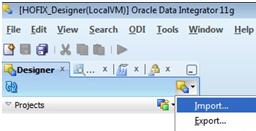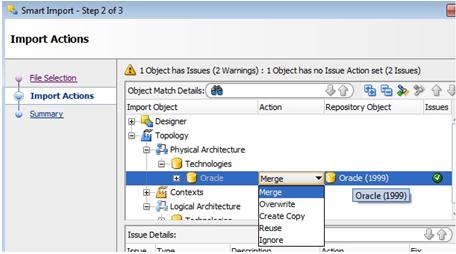|
|||||
|
|||||
|
The "principal element" usually a project is pulled into the Smart Export window and the 'Objects to be exported' area and then the procedure collects all the required elements using the known dependencies. As you may see in Fig.02., shared Models, shared Global Objects are collected together with ... the 'Topology specifications stored as you known in the Master Repository. The Logical architecture as well as the Physical Architecture info is picked up (ie: added properties to Data Servers, the connection information to the Development data sources and target, ...) The last may be useful when for instance the url specifications have changed and you would need to test your fix or correction in the same configuration as in Production. Remember, for the "Solutions" one will use the current connection information which might no longer be the same as in Production.
The end result is a complete set that may then be reloaded in a stand-alone, empty Master & Work set of repositories. |
Fig.02. the assembled set of objects and specifications |
||||
|
|||||
|
Personally, I found this process really "smart" and this feature is still currently my favorite option to keep a version of my project code because of its performance versus the "Solutions" option, the available logging/trace during the export step, the autonomy and flexibility it offers afterwards. |
|||||
to share Info, ideas, thoughts over IT and Business related matters such as Project Management, Data Quality, ELT-(L) tools (ODI, ...)...
Thursday, 7 November 2013
ODI11g - A silent evolution in Version Management? (3/3) - Using "Smart Exp-Imp"
Subscribe to:
Post Comments (Atom)


 Fig.03.Smart Import into an empty set of Repos.
Fig.03.Smart Import into an empty set of Repos.
No comments:
Post a Comment